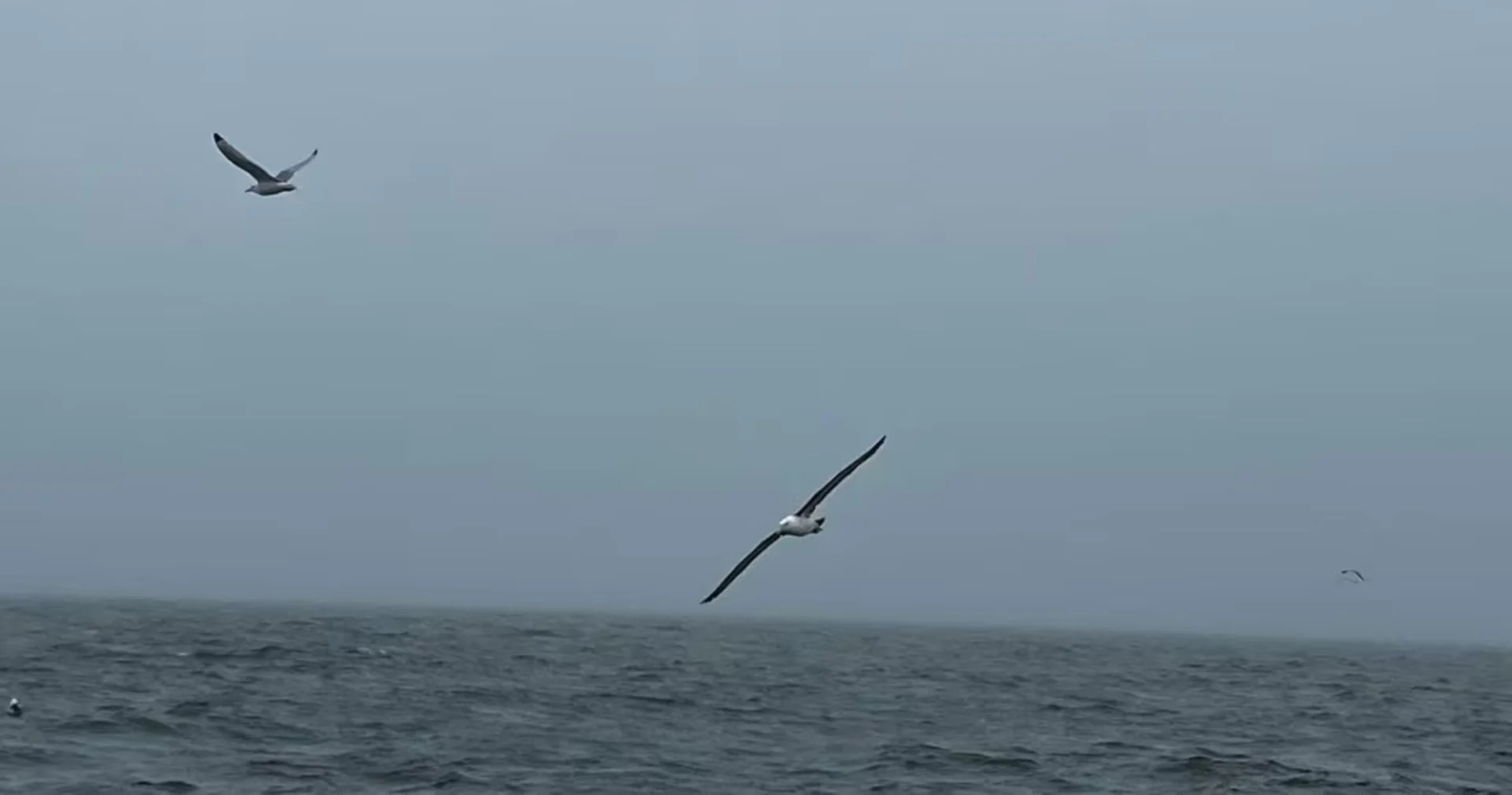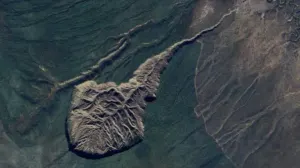
Albatross joins list of new birds to visit New Brunswick in 2023
New Brunswick has added three new species to the list of birds spotted in the province.
The New Brunswick bird records committee recently added the black-browed albatross, bell's vireo, and western flycatcher to the official list, bringing the total number of bird species ever spotted in the province to 441, said Jim Wilson, a member of the committee.
Wilson said the most interesting of the three is the black-browed albatross.
"We don't normally have albatrosses in the North Atlantic at all," he said.
In fact, it's only the second time an albatross has made the list.
The black-browed albatross was discovered west of Miscou Island on the Acadian Peninsula in June by "four very busy lobster fishermen," explained Wilson.
"And suddenly this bird appeared and one of the gentlemen dropped everything he was doing, whipped out his cellphone, and took some excellent video of what he figured was a very new bird to him."
Wilson said lobster boats usually attract the attention of seagulls looking for scraps as easy meals.

This black-browed albatross was videotaped and photographed soaring around a fishing boat in Chaleur Bay in June. (Yannick Noel/Submitted by Paul Mansz)
READ MORE: It turns out the world's most dangerous bird can swim, too
"So this bird appeared and started to circle the boat for a short time, and that's when the fisherman saw it and thought, 'Whoa, I've never seen anything this big.'"
Wilson said the bird's wingspan was about 1.5 to 2 metres — or five or six feet — "maybe more."
Black-browed albatrosses are normally found in the southern oceans, but like a lot of seabirds, they can wander.
While land birds may encounter certain barriers, said Wilson, "in the case of albatrosses or other seabirds, they just roam the limitless oceans wherever they choose to go."
Wilson said this particular bird was only documented once in New Brunswick, so it likely headed back south soon after it was filmed, in search of "more familiar waters" and its usual diet.
How to make the list
One brief-but-well-documented visit is all it takes to qualify for the list, explained Wilson.
There are five voting members of the New Brunswick bird records committee and one non-voting member from the New Brunswick Museum, which sponsors the committee.

This bell's vireo was photographed by Mark Morse on Grand Manan in October 2023. (Mark Morse/Submitted by Paul Mansz)
Wilson said photographic or video evidence is presented to the committee along with a standard form outlining how the person came to see it and other relevant information.
Each member examines and weighs the evidence and then votes on whether to add the species to the list. It takes four out of the five to add a new species.
Wilson said it's a "fairly rigorous process" and is only done the very first time a species is reported in New Brunswick.
RELATED: How to photograph birds like a pro: Expert tips for picture-perfect shots
Bell's vireo
The bell's vireo that dropped in on Grand Manan first caught the eye of Karen Miller near Anchorage Road at the end of September.
She told Mark Morse about it and he decided to stop by the field where Miller had seen the bird three separate times.
"There was a blue-headed vireo there with it and it definitely wasn't that," Morse said.
Nor was it a warbling vireo or a Philadelphia vireo, he said.

The bell's vireo is normally 'very skulky, very hard to detect,' but Mark Morse didn't have a difficult time photographing this one on Grand Manan in October. (Mark Morse/Submitted by Paul Mansz)
"I knew it was something different, but I wasn't sure if it was just a young bird that hadn't fully developed all of its colours or exactly what it was until I got ahold of Jim [Wilson] and confirmed it."
Morse said the bird let him get to within nine metres, which allowed him to get some very clear photographs that helped the committee confirm the sighting.
Morse said he's seen other rare birds, but this is the first time he's spotted a first-time-in-New-Brunswick species.
Wilson said the bell's vireo is a "skulky" bird whose range extends from Central America to western North America.
The species was actually on Wilson's prediction list for a future appearance.
"It's a bird that we always wondered when and why haven't we found one here," since there were previously documented sightings in Nova Scotia and Maine.
"So it's the first record, but it isn't something that we didn't expect," Wilson said. "The albatross was unexpected, but the bell's vireo was kind of, you know, when is it going to show up? And finally, it has."
SEE ALSO: Mountain goats like to hang out near the snow for a relatable reason
Western flycatcher
The addition of the western flycatcher is a little more complicated, said Wilson.
Photographs and video of its visit to White Head Island were actually taken in 2015 by Roger Burrows. But at that time, the western flycatcher was considered to include two distinct species — the Pacific-slope and Cordilleran.
In 2015, the committee couldn't decide which species was spotted on White Head, so they didn't add it.

A western flycatcher that was photographed by Roger Burrows in 2015 on White Head Island. (Roger Burrows/Submitted by Paul Mansz)
In July, however, the two species were lumped together by the American Ornithological Society as western flycatcher. That, said Wilson, allowed the committee to confirm the 2015 sighting as a western flycatcher.
The addition of the three new birds brings New Brunswick's total to 441. To put that in perspective, the province has seen about 80 per cent of all species to have ever been seen in Canada.
"It just illustrates the richness of our bird life here," said Wilson.
In all of North America, he said, the number is closer to 1,000 species.
In California, for example — where it's warmer, bigger and there are a lot more birders out looking — Wilson said their list is "somewhere around 600 or 700."
"But for this part of the world, New Brunswick's got a surprisingly large number of birds that have been seen."
Nova Scotia, because of its geography, tends to see more shore birds, putting their total slightly higher than New Brunswick's, said Wilson.

A western flycatcher that was photographed by Roger Burrows in 2015 on White Head Island. (Roger Burrows/Submitted by Paul Mansz)
He said New Brunswick typically adds two or three new species each year, so 2023 was a typical year in terms of numbers.
Wilson was willing to go out on a limb and make predictions for the next two years. The first is a crow, smaller than our common American crow, called a fish crow.
"With climate change, fish crows are gradually coming closer and closer to us up the Atlantic Coast, and they're now breeding and found as close as Bangor, Maine."
The other is a raptor, a hawk called the Mississippi kite.
This article was originally published for CBC News.









